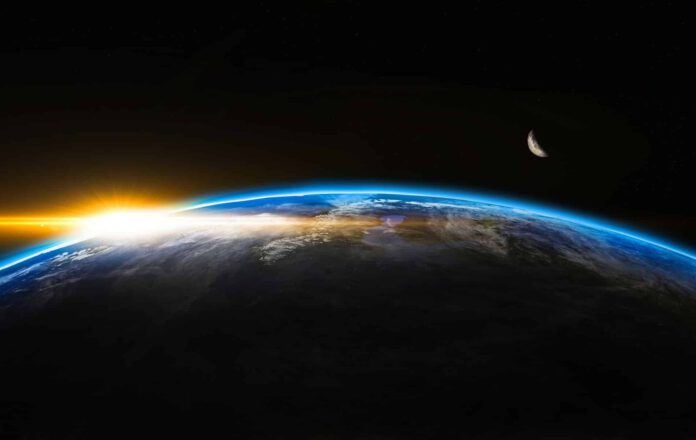
The quest for extraterrestrial life has been fraught with difficulties; our methods to determine whether a planet could sustain life often fall short. This predicament becomes even more challenging when we wish to examine planets far from Earth. Excitement is high as scientists have discovered a way to -within our limited means- give a boost to the hunt for aliens.
Is there extraterrestrial life?
With the progressive advancement in telescopic technology, scientists have had hopes of finding an answer to that question. However, disappointment soon follows. Although scientists have devised various ways to search for aliens, the instruments we have for this purpose often turn out to be too primitive.
Water
In the search for extraterrestrial life, the foremost criterion is whether a suspected planet possesses water. Liquid water is one of the major requirements for life, as we know it here on Earth. But determining the presence of liquid water on the surface of a planet is difficult, says researcher Julien de Wit. This task, particularly when it focuses on distant planets, “quickly falls outside the framework of what even the most modern observatories can observe”. However, De Wit and his colleagues have some good news, “We have finally found a way in which we can determine whether there is water present on distant planets at our current level of observations.” This study was published in the journal Nature Astronomy.
How does it work?
Rather than looking for water, De Wit and his colleagues suggest searching for an element that, if water is present, often shines in its absence or limited presence. Specifically, their study suggests that a low CO2 level in the atmosphere could be an indirect indication of a large amount of surface water, such as complete oceans. This marks the first practical method where we can use current technology to determine the presence of water on distant planets.
Sparkling Water
Water presence is perceived to be crucial for a planet to be deemed habitable. The common method for locating water entails observing glimmers; sunlight reflecting off liquid surfaces. This technique has been successful in locating water on Titan, Saturn’s largest moon. Analyzing glimmers works well for nearby planets. However, this becomes exceedingly difficult when examining planets located much further away. In these cases, the glimmers are not as apparent, necessitating other means of confirming the existence of water.
Local Inspiration
For this new method, the scientists initially studied the planets in our solar system. They focused primarily on Earth, Venus, and Mars. Of these planets, to our current knowledge, only Earth sustains surface water and life. Upon comparing these planets, researchers notably observed that Earth has considerably less CO2 in its atmosphere compared to Venus and Mars. The strong water cycle on Earth plays a key role in this. For instance, the oceans hold a vast amount of CO2, which results in less CO2 in the atmosphere. However, it is important for an atmosphere to exist to retain carbon dioxide. In this scenario, searching for CO2 could lend a helping hand. “Carbon dioxide can absorb a lot of infrared light,” explains de Wit, “This can be readily observed in the atmosphere of exoplanets. Such a discovery can quickly reveal the presence of an atmosphere.”
Oxygen
According to scientists, the presence of water and an atmosphere marks the first step in verifying extraterrestrial life. The next critical step entails inspecting the atmosphere for oxygen. The downside of searching for oxygen is its difficult detection. Researchers have devised a solution for this challenge: they propose checking for the presence of ozone, the formation of which results from the reaction of oxygen in the atmosphere with sunlight.
Practical Plan
The research holds considerable significance as scientists have long sought better methods to ascertain the existence of extraterrestrial life. The problem with many of the ideas and theories arising from these pursuits is they often require far more advanced technology to work and are hence not yet usable. The most significant aspect of this new method is that we should already be able to measure both ozone and CO2 levels with today’s technology, such as the James Webb Space Telescope. Especially, CO2 absorbs infrared light remarkably well, and the James Webb Telescope should be able to detect this infrared light. The researchers explain that if ozone is also observed, it is highly likely that this is a result of extraterrestrial life converting CO2 into oxygen, which in turn reacts with sunlight in the atmosphere. Amaury Triaud, who also contributed to the research, explains: “If we detect ozone, it is likely the result of extraterrestrial life that has converted carbon dioxide into oxygen. In such a case, the alien life could be significant. We’re not talking about a few small bacteria, but it’s likely that there’s a lot of biomass spread across the entire planet.”
For a preliminary research, the team intends to study the TRAPPIST-1 planetary system, which is approximately 40 light-years away from us. De Wit concludes, “We now have a roadmap with which we can find habitable planets. If we cooperate, it should be possible to make a significant number of major discoveries in the coming years.”











